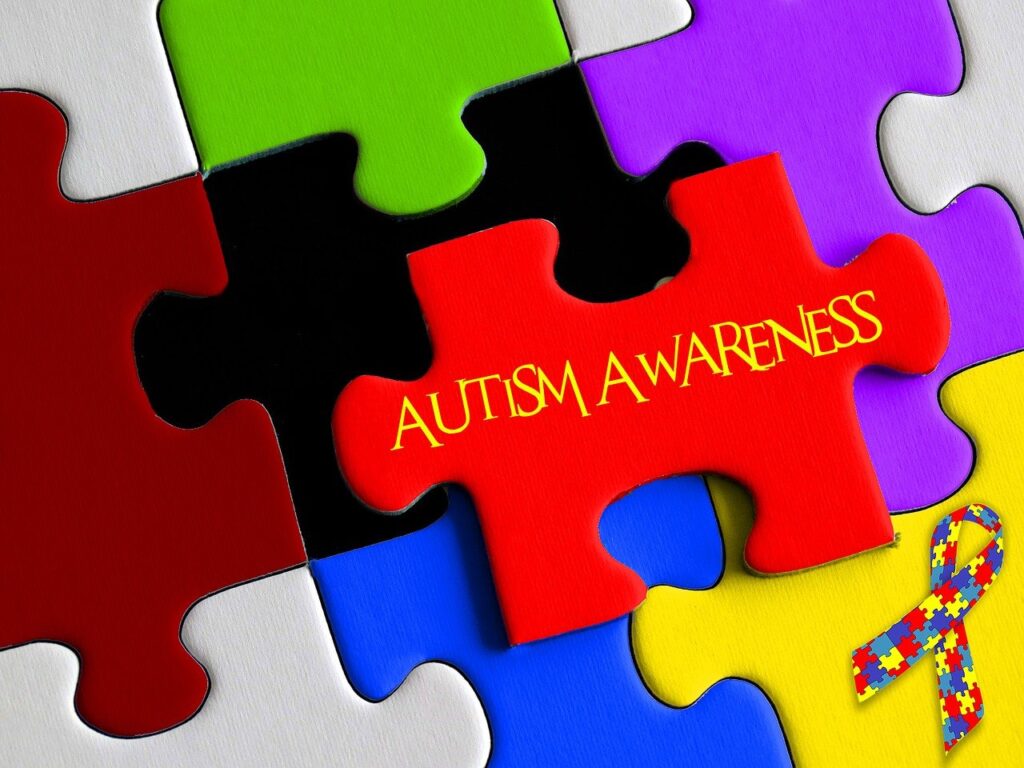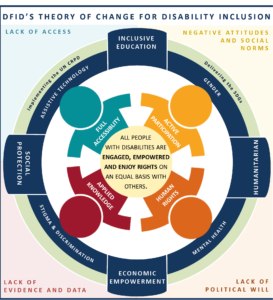BY HUMAIRA HASAN
INTRODUCTION
What if unlocking the complete potential of a child with Autism Spectrum Disorder is decided not solitarily by the intervention but at the age when it begins?
Autism spectrum disorder (ASD) may be defined as a developmental and neurological disorder that interferes with one’s interaction with others, learning abilities, communication, and behavior. (NIHM) The diagnostic age for Autism Spectrum Disorder has seen a decrease in the past few decades. (Daniels, A. M., et al.), however, currently, the mean age for diagnosis lies between 3 and 4 years. A study states that in 2020, the rates of autism spectrum disorder (ASD) among Asian, Black, and Hispanic children were at least 30% higher than in 2018. (Centers for Disease Control and Prevention [CDC], 2023).
Thus, with the rising numbers of individuals with diagnosed ASD, the need for early intervention has become increasingly urgent. This paper argues that early intervention for children with Autism Spectrum Disorder is essential for maximizing developmental outcomes; by evaluating the efficacy of strategies such as Applied Behavior Analysis, speech-language therapy, occupational, and music therapy. This meta-analysis highlights how early intervention can significantly enhance cognitive, social, and communicative skills while alleviating core symptoms of ASD.
DIAGNOSIS
Social skills are necessary to adapt to different environments and conduct appropriate interactions with those around. However, children with ASD require external help to grasp these foundational skills (eg, social engagement, joint attention, etc). According to DSM 5- TR, the Diagnostic and Statistical Manual of Mental Disorders, Fifth Edition, Text Revision (DSM-5-TR) which is a manual that assists researchers and clinicians in diagnosing mental disorders, individuals with ASD often showcase difficulty in social interactions, emotional reciprocity, repetitive behavior, and fixation on a certain interest. These individuals may be more dependent for care on others than individuals within their age groups. (Ayres, Mechling, & Sansosti)
EARLY INTERVENTION
There are a number of rationales when it comes to the justification of why beginning early is better in the case of intervention. The first one can be due to early neuroplasticity. There is a high rate of synapse formation during the stage that constitutes birth to 3 years of age. (Kolb & Gibb, 2011)
The rising prevalence of Autism Spectrum Disorder calls for the need for early intervention to adapt to social situations better. Research suggests that there is no need to delay intervention in the case of Autism Spectrum Disorder. Noteworthy improvements can be seen as a result of early intervention at as early as preschool level in oral language and reading comprehension. (Macdonald et al., 2021) Studies also show that autistic symptoms are reduced more in younger children than in older children. (Maksimović et al., 2022)
EARLY INTERVENTION STRATEGIES
There are a number of early intervention techniques such as speech therapy, Applied Behavior Analysis(ABA), occupational therapy, and music therapy that are discussed in detail below:
APPLIED BEHAVIOR ANALYSIS
The term Applied Behavior Analysis was first used by Baer et al. (1968) to comprehend and improve behavior through the use of basic behavioral principles. Visible, quantifiable, and clearly defined behavior which may either occur not frequently enough or in excess is the focus of ABA. (APA)
Most study records indicated improvement in all outcome categories namely language, cognitive, social/communication, problem behavior, adaptive skills, emotional aspects, autism symptoms, and quality of life (QoL) outcomes, with 63%–88% showing positive results across different measures. In comparison, 0%–2% reported worsening, 13%–36% showed mixed results, and 0%–13% indicated no change. (Gitimoghaddam et al., 2022) In another recent research, significant improvements in verbal behaviors due to ABA on 11 out of the 13 VB-MAPP(Verbal Behavior Milestones Assessment and Placement Program) scales, highlighting the importance and effectiveness of early interventions using ABA. A great increase in Tacting skills, matching-to-sample, Visual perceptual, and interverbal skills was also observed. (Pater et al., 2022)
MUSIC THERAPY
Parent-child cooperative music can be defined as a therapeutic activity that assists in alleviating symptoms in children with autism. Through extensive research, it has been observed that parent-child cooperative music therapy combined with ABA has proved effective in reducing the core symptoms of Autism in children. (He et al., 2022) In another study, focusing on the “Papageno Music Therapy Program” (PMTP), it was observed that children with autism displayed improvements in their social interactions which were not just limited to their therapy sessions, showing evidence that PMTP improves social behavior. (Pater et al., 2022)
SPEECH LANGUAGE THERAPY
On conducting research on the effectiveness of speech-language therapy, it was found that while younger children showed better speech and language development after a year of therapy, there was no significant difference in language abilities between younger(aged 36–47 months old) and older children(48–60 months old). (Maksimović et al., 2022) This implies that although early intervention is helpful, one year may not be enough time to see significant improvements in speech and language skills, particularly when development is significantly delayed. (Maksimović et al., 2022)
OCCUPATIONAL THERAPY
Occupational Therapy is a type of treatment for individuals with autism that focuses on decreasing impairing symptoms and enhancing functioning in both children and adults. (Stornelli, 2015) Occupational therapy looks at how a person responds poorly to sensory experiences and adjusts the environment in order to lessen the negative responses to sensory stimulation. (ASD Clinic, n.d.) Looking at the research findings, it was observed that relationship-building abilities, body and object usage, sensory, social, self-care, and language skills significantly improved with early intervention. However, these benefits were particularly evident during the early stages of occupational therapy with the rate of improvement declining over time. (Jaicks, 2024) Another study states that occupation therapy through joint attention-based interventions and a child-centered approach, depict significant improvement in the reduction of ASD-related behaviors while enhancing social communication and visual perception in children with ASD.(Özkan et al., 2023) These research findings underscore the importance of early intervention in individuals with Autism Spectrum Disorder.
CONCLUSION
This paper aims to highlight the importance of early intervention in order to improve outcomes for children with Autism Spectrum Disorder. The evidences suggest that early intervention strategies such as occupational therapy, speech-language therapy, music therapy, and Applied Behavior Analysis(ABA) show noteworthy improvement in cognitive, social, and communicative skills.
Furthermore, this study identifies several gaps in the existing literature, suggesting that future research should focus on the long-term effects of various interventions and the individual differences in children’s responses to early therapy.
To foster long-term development and unlock the complete potential of individuals with ASD, this study portrays how the role of early intervention is critical and urgent.
REFERENCES
- Association, N. a. P. (2022). Diagnostic and Statistical Manual of Mental Disorders. https://doi.org/10.1176/appi.books.9780890425787
- Autism Spectrum Disorder. (n.d.). National Institute of Mental Health (NIMH). https://www.nimh.nih.gov/health/topics/autism-spectrum-disorders-asd
- Ayres, K. M., Mechling, L., & Sansosti, F. J. (2013). THE USE OF MOBILE TECHNOLOGIES TO ASSIST WITH LIFE SKILLS/INDEPENDENCE OF STUDENTS WITH MODERATE/SEVERE INTELLECTUAL DISABILITY AND/OR AUTISM SPECTRUM DISORDERS: CONSIDERATIONS FOR THE FUTURE OF SCHOOL PSYCHOLOGY. Psychology in the Schools, 50(3), 259–271. https://doi.org/10.1002/pits.21673
- B., K., & R, G. (2011). Brain plasticity and behaviour in the developing brain. Journal of the Canadian Academy of Child & Adolescent Psychiatry., 265–276.
- CDC Newsroom. (2016, January 1). CDC. https://www.cdc.gov/media/releases/2023/p0323-autism.html
- Clinical Testing and Diagnosis for Autism Spectrum Disorder. (2024, May 16). Autism Spectrum Disorder (ASD). https://www.cdc.gov/autism/hcp/diagnosis/index.html
- Daniels, A. M., & Mandell, D. S. (2013a). Explaining differences in age at autism spectrum disorder diagnosis: A critical review. Autism, 18(5), 583–597. https://doi.org/10.1177/1362361313480277
- Daniels, A. M., & Mandell, D. S. (2013b). Explaining differences in age at autism spectrum disorder diagnosis: A critical review. Autism, 18(5), 583–597. https://doi.org/10.1177/1362361313480277
- Gitimoghaddam, M., Chichkine, N., McArthur, L., Sangha, S. S., & Symington, V. (2022). Applied Behavior Analysis in Children and Youth with Autism Spectrum Disorders: A Scoping Review. Perspectives on Behavior Science, 45(3), 521–557. https://doi.org/10.1007/s40614-022-00338-x
- He, Y., Liu, G., Zhang, Y., Xie, N., Lin, J., & Hu, R. (2022). [Effect of parent-child cooperative music therapy on children with autism spectrum disorder and their mothers: a prospective randomized controlled study]. PubMed, 24(5), 472–481. https://doi.org/10.7499/j.issn.1008-8830.2201105
- Jaicks, C. C. D. (2024). Evaluating the Benefits of Occupational Therapy in Children With Autism Spectrum Disorder Using the Autism Behavior Checklist. Cureus. https://doi.org/10.7759/cureus.64012
- Landa, R. J. (2018). Efficacy of early interventions for infants and young children with, and at risk for, autism spectrum disorders. International Review of Psychiatry, 30(1), 25–39. https://doi.org/10.1080/09540261.2018.1432574
- Macdonald, D., Luk, G., & Quintin, E. (2021). Early Reading Comprehension Intervention for Preschoolers with Autism Spectrum Disorder and Hyperlexia. Journal of Autism and Developmental Disorders, 52(4), 1652–1672. https://doi.org/10.1007/s10803-021-05057-x
- Maksimović, S., Marisavljević, M., Stanojević, N., Ćirović, M., Punišić, S., Adamović, T., Đorđević, J., Krgović, I., & Subotić, M. (2023). Importance of Early Intervention in Reducing Autistic Symptoms and Speech–Language Deficits in Children with Autism Spectrum Disorder. Children, 10(1), 122. https://doi.org/10.3390/children10010122
- Miltenberger, R. G., Valbuena, D., & Sanchez, S. (2021). Applied behavior analysis. In American Psychological Association eBooks (pp. 637–671). https://doi.org/10.1037/0000218-022
- Occupational Therapy for Autistic Spectrum Disorder | Autistic Spectrum Disorder | Conditions | ASD clinic.co.uk | Social, behavioural & communication therapy. (n.d.). https://www.asdclinic.co.uk/conditions/autistic-spectrum-disorder/occupational-therapy-for-autistic-spectrum-disorder.php#:~:text=One%20symptom%20that%20individuals%20with,environment%20to%20minimise%20these%20reactions
- Oono, I. P., Honey, E. J., & McConachie, H. (2013). Parent‐mediated early intervention for young children with autism spectrum disorders (ASD). Evidence-Based Child Health a Cochrane Review Journal, 8(6), 2380–2479. https://doi.org/10.1002/ebch.1952
- Özkan, E., Çelik, S. B., Yaran, M., & Bumin, G. (2023). Joint Attention–Based Occupational Therapy Intervention in Preschoolers With Autism Spectrum Disorder: A Randomized Controlled Trial. American Journal of Occupational Therapy, 77(2). https://doi.org/10.5014/ajot.2023.050177
- Pater, M., Spreen, M., & Van Yperen, T. (2022). Music therapy for children on the autism spectrum: Improved social interaction observed by multiple informants across different social contexts. Nordic Journal of Music Therapy, 32(1), 29–47. https://doi.org/10.1080/08098131.2022.2046628
- Stornelli, J. L. (2016). Occupational Therapy for Autism Spectrum Disorder. In Oxford University Press eBooks (pp. 339–368). https://doi.org/10.1093/med/9780199349722.003.0019






